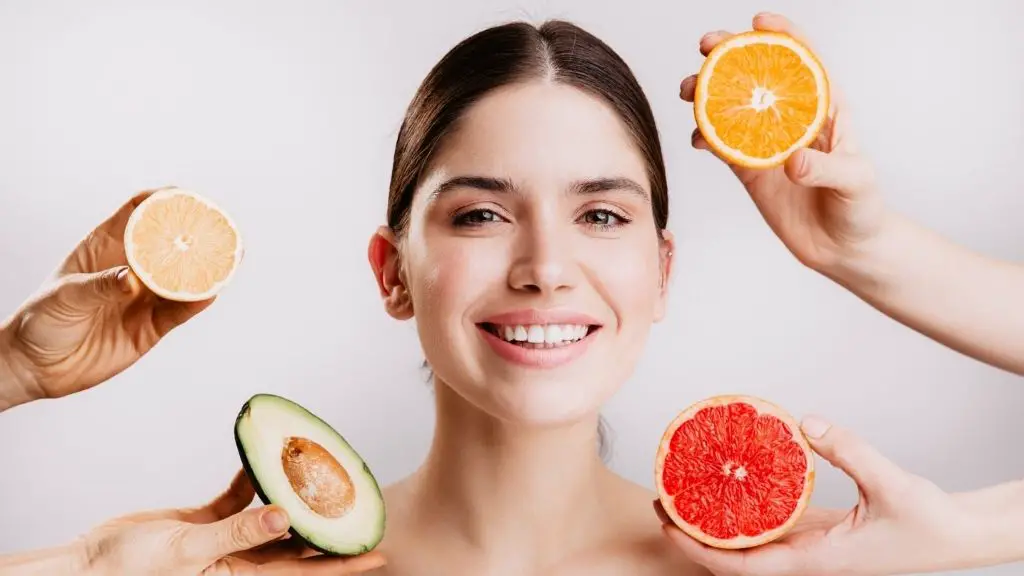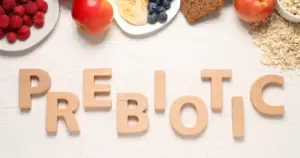9 Best Skin Whitening Foods

Top 9 Skin Whitening Foods: 9 Foods that are Famous for their Skin Whitening Properties and Will Change Your Skin for The Better.
Irrespective of the color of your skin, you want it to be as clear and glowing as possible. One of the best ways to achieve this is by taking proper care of your skin. This includes eating right, staying hydrated, and consuming the right foods.
Here we list down 9 natural skin whitening foods for fairer skin.
How does diet affect your skin?
You are what you eat. Our grandmothers certainly nailed it when it came to concocting natural home remedies with no side effects and are free of long-term risks. Simple ingredients from your own kitchen can be the perfect solution to your skincare problems.
Whether you’re looking to treat acne, prevent premature aging, reduce the appearance of wrinkles, or combat another annoying skin condition, the right diet can be a lifesaver.
Lightening your skin tone does not always require the use of skin whitening creams or the use of skin whitening beauty treatments. Instead, there are a variety of natural skin whitening foods that can assist you in lightening your complexion.
While these cleansers and lotions provide a topical fix—a beauty band-aid—beautiful, hydrated skin begins from within. And it all depends on whether you’re eating the best foods for glowing skin.
By shutting off inflammatory genes and providing your body with the resources it needs to maintain and develop healthy tissues, incorporating certain healthy foods into your daily routine can help you fight back against your complexion woes. Our skin reflects our health, and nourishing skin from the inside out is a sure way to get optimal results.
You must eat the right combination of foods to provide your skin with the essential nutrients it requires to stay soft, radiant, and blemish-free.
Many people are turning to Nutricosmetics, also known as “green cosmetics,” which combines the benefits of food supplementation with the benefits of cosmetic treatments to improve the beauty of our bodies while remaining environmentally and sustainably friendly.
As a result, in this article, we’ve compiled a list of the top 9 foods to eat in order to obtain the best version of your skin.
| Note: Given home remedies have no scientific basis, but it has been observed that people have used them to obtain amazing results. |
Top 9 Skin Whitening Foods
1) Cucumber for skin lightening
Cucumber is composed of 96% water. That equates to hydration, hydration, and hydration. As a result, they are cooling to the body and are high in antioxidants.
Cucumbers contain more than just water. Cucumbers also contain magnesium and potassium, and the peel of a cucumber contains Vitamin C and Vitamin K, both of which are essential for healthy, beautiful skin. It soothes skin irritations and aids in the reduction of swelling. Cucumber can also help you relax and soothe the pain of sunburn [1].
| Fun Fact-Sea cucumbers are marine animals that can also help with skin lightening and fine wrinkle reduction. They help to reduce puffiness and dark circles around the eyes [2]. |
How to Use it
In your diet
- Cut them up and eat them (plain or sprinkled with salt)
- Cucumber sandwiches made with toasted bread, cream cheese, cucumber slices, and your choice of spice.
- Cucumber salad (of which there are many variations)
- Can be added to curd as well for making raita.
For topical application
Cucumber juice can help dilute potent essential oils like tea tree oil for acne-prone skin. This way, you can fight breakouts without irritating or drying out your skin. Cucumber can also be rubbed directly on the skin, especially over acne scars, or used to make a DIY face toner or even used as a base for a sheet mask.
2) Oranges for skin whitening
When you apply orange juice directly to your face, you’re getting the purest form of vitamin C that hasn’t been diluted or altered.
The peel of an orange contains more vitamin C than the fruit itself. Because the peel contains antimicrobial and antibacterial properties, using it in face packs on a regular basis will result in clearer and brighter skin in no time. Orange peels act as a natural bleach, lightening dark blotches and eventually removing them and also protects against UV damage [3].
The fruit also contains a good amount of vitamin A, which increases blood flow to the skin’s surface and makes skin appear fairer, brighter, and more evenly toned.
Oranges are high in vitamin C and antioxidants, which help the body fight free radicals and protect DNA. This slows the onset of premature aging [4].
| Precaution- When it comes to sensitive and dry skin, adding citric acid to your skincare routine should not be taken lightly. It can provide a wonderful glow to the face, but if you go a little too heavy-handed and use it too frequently, it can cause stinging, burning, and irritation to the skin. |
How to Use it
In your diet
- The best option is to eat an orange every day.
- Freshly squeezed orange juice can also be consumed in the morning or as a snack.
- You can also use it to make a delicious orange smoothie or to add to salads.
For topical application
- This remarkable fruit’s peels can help you get rid of your tan and sunspots. It’s as simple as crushing the peels and powdering them. Mix in some yogurt and apply to the entire face. Scrub lightly and allow for 15 minutes before rinsing with cold water.
- To treat acne and scars, mash the shredded orange peels. When applied to acne and pimples on a regular basis, oranges can help to reduce acne, pimples, and blemishes.
3) Strawberry for skin whitening
Strawberries are one of the most nutrient-dense superfoods on the planet (and a great ice-cream flavor!).
They have salicylic acid, an alpha-hydroxy acid that is commonly used in beauty products. Salicylic acid has anti-inflammatory and antibacterial characteristics, which can help relieve acne problems. It cleanses the skin and eliminates dirt and bacteria that can clog pores [5].
Strawberries contain vitamin C, which helps to increase collagen formation and reduce fine lines and wrinkles. Strawberries also contain omega-3 fatty acids, which tend to brighten the skin tone making it one of the best natural skin whitening foods.
Strawberries also contain ellagic acid, which protects skin from UV exposure and helps to reduce the appearance of wrinkles and other signs of aging [6].
How to Use it
In your diet
- Toss in a smoothie.
- Toss with yogurt.
- Instead of jelly or jam, spread it on toast.
- Use it as a pancake and waffle topping.
- Toss with cereal.
- Toss with salad.
- Dip in a fruit dip that is minimal in fat.
For topical application
- For bright and shining skin, mash a few strawberries and apply the mashed bits on your skin, then wash them off after 10 minutes.
- To treat your dull and sunburned face with this simple strawberry pack, simply puree 2 to 3 strawberries and mix in 4 to 5 drops of rose water. Apply it to your skin and wait for it to dry. After 15 to 20 minutes, rinse thoroughly.
4) Kale for skin whitening
Kale is the king of all greens, but it’s also the queen of beauty. Kale is one of the best skin whitening foods because it reduces oxidative stress. This cruciferous vegetable is high in the skin’s anti-aging vitamins A, C, E, and K. Leafy greens are one of the richest sources of vitamin K, a nutrient that aids in blood clotting and promotes faster healing when consumed.
How to Use it
In your diet
- Blend it into a green smoothie.
- Add in a salad.
- Serve with nuts.
- Put it in the soup.
- Make a kale burger.
For topical application
To remove dead skin cells, mash up some kale leaves, add some vegetable shortening or body lotion, and make a thick paste. Slather the kale paste all over your body and let it sit for 15 minutes before getting out of the shower. Rinse it with warm water.
5) Avocado for skin lightening
Avocados have anti-inflammatory properties that help to lower oxidative stress. This protects the skin. They also have fiber and vitamins A, C, K, B3, and B6.
Avocados also contain lutein and zeaxanthin, which protect the skin from UV damage. Avocados also improve the firmness of your skin and help accelerate the healing of wounds [7].
Avocados contain good fats that can reduce skin redness and are essential for maintaining good moisture levels. The fruit contains monounsaturated fatty acids, which have been shown to hydrate and protect the skin by lowering the risk of premature aging caused by UV radiation.
How to Use it
In your diet
- The simplest way to enjoy avocados is to season them with salt and pepper.
- This fruit can be added to salads and smoothies.
- Can also be sprinkled on toast.
For topical application
A person can use avocado as a facial moisturizer by massaging the inside of an avocado peel onto their face. Allow the residue to dry for about 15 minutes before rinsing the face with warm water. Avocado oil in a bottle can also be used to moisturize the face at night. The next morning, wash it off.
6) Tomatoes for skin whitening
Tomatoes are one of the most efficient skin-clearing and cleansing cures. These are not only nutrient-dense but also incredibly helpful at repairing and clearing the skin. Tomatoes, which are slightly acidic in nature, are high in potassium and vitamin C, which transforms even the dullest of skins and restores radiance.
Lycopene, found in tomatoes, boosts collagen strength and protects against the oxidizing effects of UV radiation by removing skin-aging free radicals. Apart from that, it aids in the treatment of skin disorders associated with aging and UV damage, making it an excellent skin rejuvenator [7].
How to Use it
In your diet
- Consume it raw.
- Toss tomatoes into your salads.
- Consume pasta with tomato sauce.
- Make a sandwich with tomato slices.
- It is suitable for use in soups and sauces.
- They can be toasted and eaten with any meal.
For topical application
To activate the lycopene benefits, apply tomato pulp or juice to your skin. And, as if it couldn’t get any better, because tomatoes are acidic in nature, the pulp of tomatoes also helps tighten pores and prevent pimples. It is also a natural sunscreen.
7) Mango for skin whitening
Mango, aside from being the summer king of fruits, is also a go-to skincare product. It is an amazing source of vitamins and minerals that play an important role in producing collagen to firm the skin, from reducing acne and premature aging to brightening skin and reducing dark spots.
If you are looking for natural skin brightening foods, make sure mango is on your list because it contains-
Vitamin C, which protects against UV rays, reduces acne inflammation, and lightens the skin also promotes collagen production.
Vitamin A – Reduces fine lines by increasing
Vitamin E – Keeps the skin hydrated.
Vitamin B6 – Reduces sebum production on the skin.
Copper – Reduces the appearance of fine lines and wrinkles.
Potassium – keeps the skin moisturised.
Magnesium – helps to reduce oily skin and acne.
How to Use it
In your diet
- Mangoes are best eaten whole and unprocessed.
- Blend into smoothies or Greek yogurt for a tasty treat.
- Toss into your salsas.
For topical application
1 tablespoon milk, 1 teaspoon organic honey, and the pulp of one full mango Apply this concoction to your face. Allow it to sit for 10 minutes before rinsing to unveil soft, glowing skin.
8) Kiwi for skin whitening
Kiwi fruit contains a high concentration of Vitamin C, which is excellent for removing dirt and impurities from the skin. The same amount of Vitamin C will make your face glow and may lighten your skin tone.
Vitamin C is also one of the richest sources of antioxidants, which aid in the fight against free radicals and prevent them from damaging your skin. With the damage under control, Vitamin C goes even further to reawaken inactive skin cells, allowing them to effectively rejuvenate your skin and repair damage as quickly as possible. When applied to the skin, vitamin C has natural astringent properties that help brighten it.
Kiwi is also high in Vitamin E. Vitamin E, in addition to moisturizing, enhances the beneficial effects of Vitamin C [8].
How to Use it
In your diet
- You can eat a raw kiwi as part of your breakfast.
- Blend a few kiwi slices with other fruit, milk, or juice to make a fiber-rich smoothie.
- You can also make a delicious fruit salad by combining several kiwis with other fruits.
For topical application
On its own, kiwi fruit pulp makes an excellent mask. All that is required is to peel the fruit and mash its pulp into a smooth paste. Apply to the skin and leave on for 15 minutes before rinsing.
9) Carrots for skin whitening
Carrots are high in beta carotene, a natural sun protectant, and vitamin A, which aids in collagen repair [7].
Carrots are like your own personal magic wand: they’re good for your eyes and help clear up breakouts. There’s no magic here, just a lot of beta-carotene and vitamin A, an antioxidant that prevents cell overproduction in the skin’s outer layer. That means fewer flaky dead cells that could clog your pores if they are combined with sebum.
How to Use it
In your diet
- Snack on carrot sticks or baby carrots.
- Shredded carrots can be used in coleslaws, salads, or wraps.
- Shredded carrots can be added to baked goods such as cakes and muffins.
- Carrots add a naturally sweet, mild flavor to juices and smoothies.
For topical application
In a bowl, grind the grated carrots into a smooth paste. Combine honey, milk cream, and olive oil in a mixing bowl. Using a spoon, thoroughly combine the ingredients. Apply this carrot mask to your face after washing it. Allow it to sit for 10 to 15 minutes. Use cold water to clean.
3-day vegetarian diet chart to step up your skin game
| Meal timing | Day 1 | Day 2 | Day 3 |
| Early Morning
(6a.m. – 7a.m.) |
Lemon Water | Haldi doodh | Dry fruits and Skimmed Milk |
| Breakfast
(8 a.m. – 8.30a.m.) |
4 Idly +
1 cup vegetable sambar |
1 cup Quinoa- sprouts salad +
1 glass orange juice |
2 Besan chilla +
Veg chutney |
| Mid-morning
(11 a.m.- 11.30a.m.) |
1 glass Strawberry milkshake | 1 cup Dark chocolate overnight oats with chia | 1 Sweet Potato -corn cutlet +
1 Glass pomegranate juice |
| Lunch
(2 p.m. – 2.30 p.m.) |
2 Chapathi +
1 cup Spinach dal + ½ cup beans curry + 1/2 cup Curd |
1 Paneer tikka +
Sauteed broccoli and kale + 1 cup Vegetable Khichdi + 1 cup Raita |
2 Jowar roti +
½ cup Amaranth dal + ½ cup lady’s finger curry + ½ cup curd |
| Evening Snacks
(4 p.m. – 4.30 p.m.) |
Baked sweet potato chips with buttermilk dip | Avocado- Cucumber- tomato salad | Green tea with honey |
| Dinner
(8 p.m.- 8.30 p.m.) |
1 chickpea salad+
2 Beetroot paratha + 1 cup curd |
3 Fenugreek phulka +
1 cup Tomato dal+ 1 glass buttermilk |
2 Chapathi +
1 cup Tomato soya chunks curry + 1 glass buttermilk |
What else can you do to get glowing skin?
- Have a balanced, antioxidant-rich diet
- Get enough sleep
- Stay hydrated
- Moisturize your skin
- Avoid alcohol
- Limit oily food/ junk food
- Limit caffeine intake
Wrapping up
Vitamins and minerals are essential for both our skin and our bodies. Consuming the fruits listed above is beneficial to one’s digestive system and can help treat a variety of skin problems. In the long run, however, healthy skin is usually the result of a collaborative effort.
References
- Mukherjee, Pulok K et al. “Phytochemical and therapeutic potential of cucumber.” Fitoterapia vol. 84 (2013)
- Kim, So Jung et al. “Skin whitening and anti-corrugation activities of glycoprotein fractions from liquid extracts of boiled sea cucumber.” Asian Pacific journal of tropical medicine vol. 9,10 (2016)
- Puglia, Carmelo et al. “Protective effect of red orange extract supplementation against UV-induced skin damages: photoaging and solar lentigines.” Journal of cosmetic dermatology vol. 13,2 (2014)
- Fusco, Domenico et al. “Effects of antioxidant supplementation on the aging process.” Clinical interventions in aging vol. 2,3 (2007)
- Arif, Tasleem. “Salicylic acid as a peeling agent: a comprehensive review.” Clinical, cosmetic and investigational dermatology vol. 8 455-61. 2015,
- Gasparrini, Massimiliano et al. “A Pilot Study of the Photoprotective Effects of Strawberry-Based Cosmetic Formulations on Human Dermal Fibroblasts.” International journal of molecular sciences vol. 16,8. (2015)
- Dreher, Mark L, and Adrienne J Davenport. “Hass avocado composition and potential health effects.” Critical reviews in food science and nutrition vol. 53,7 (2013)
- Schagen, Silke K et al. “Discovering the link between nutrition and skin aging.” Dermato-endocrinology vol. 4,3 (2012)
![Blue Foods List [with pictures]](https://keevs.com/wp-content/uploads/2023/03/Blue-Foods-List-with-pictures-300x158.png)






